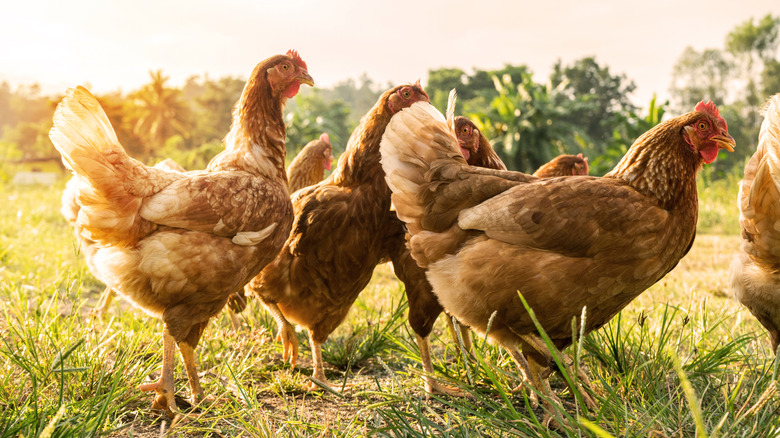Advantages & Disadvantages Of Selective Breedings
Selective breeding can develop desirable traits in plants and animals, but there can be negative effects as well. Without selective breeding, many domestic animals would not exist, and many plants that we rely on for food would not be as productive as they are. On the negative side, some exaggerated animal characteristics developed through selective breeding may prevent the animal from leading a normal life, and plants propagated through selective breeding can be susceptible to diseases. Overall, the implications of selective breeding are positive for humans, but an awareness of the disadvantages can help reduce some of the negative effects.
How selective breeding works
Selective breeding means choosing the plants or animals that have the most pronounced desirable characteristics and breeding them. When the process is repeated with the descendants of the selected parents and again over several generations, the desirable characteristics develop more and more.
For example, today's dairy cows are the result of many years of selective breeding. The cows that gave the most milk were bred, and when their calves started producing milk, the calves that gave the most milk were bred as well. Over the years, always selecting for breeding the cows that produced the most milk resulted in cows that produce much more milk than the average cow that wasn't selectively bred.
The many breeds of dogs are an example of how selective breeding can develop certain traits. For a large breed, larger than average males are bred with larger than average females. Over many generations, a larger breed results. The same effect occurs when dogs with unusually long hair are selectively bred, and a long-haired breed results. Selective breeding can take a long time, but is very effective.
Typical advantages of selective breeding
Selective breeding has been used for plants and animals that are sources of food, for making animals suitable for specific types of work, for making plants produce certain substances, and for decorative effect. In each case, there has to be an initial characteristic present in the plant or animal that is then augmented through selective breeding.
In the case of food plants, selective breeding increases the yield and the quality of the harvest. For example, selective breeding of corn increased the size of the kernels and the number of ears. For non-food plants such as tobacco or cotton, selective breeding increased the yields and introduced varieties. Decorative plants such as roses and tulips were bred for large flowers and different colors. The benefits of selective breeding in plants include abundance of food, new types of products, and a wide variety of decorative house plants.
Selective breeding in animals has served different purposes. Food animals such as pigs and turkeys are bigger, more tender, and grow faster. Work animals such as horses and some breeds of dogs were bred for specific tasks. In dogs bred for hunting, the kind of hunt determined what characteristic was useful in a particular breed of dog. Other dogs and animals such as tropical fish were bred for decorative or attractive characteristics. Some dogs are cute and some tropical fish are beautiful due to selective breeding.
Problems with selective breeding
Selective breeding takes one characteristic and breeds the plants or animals based on that selection. This means that other characteristics are lost and the resulting population is very similar. With less genetic diversity, these plants and animals can all become sick together or all fall victim to an environmental influence that affects their health. In a normal population, there are always many individuals different enough that they don't catch the illness or are not susceptible to the same environmental factors. A population developed through selective breeding can therefore be completely wiped out.
Sometimes selective breeding is carried so far that, although the desired characteristics are present, other weaknesses have developed as well. For several breeds of dogs, physical problems such as weak spines, a shortened lifespan, or other physical problems accompany the development of a particular breed.
When selective breeding of a characteristic is very successful, the animals that were the subject of the selective breeding may suffer. For example, turkeys that are too big and fat may not be able to walk, and cows may be bothered by huge udders. In some cases, these negative effects can be avoided by proper selection of the candidates for breeding, but in other cases, additional measures to relieve animal discomfort may be necessary.
